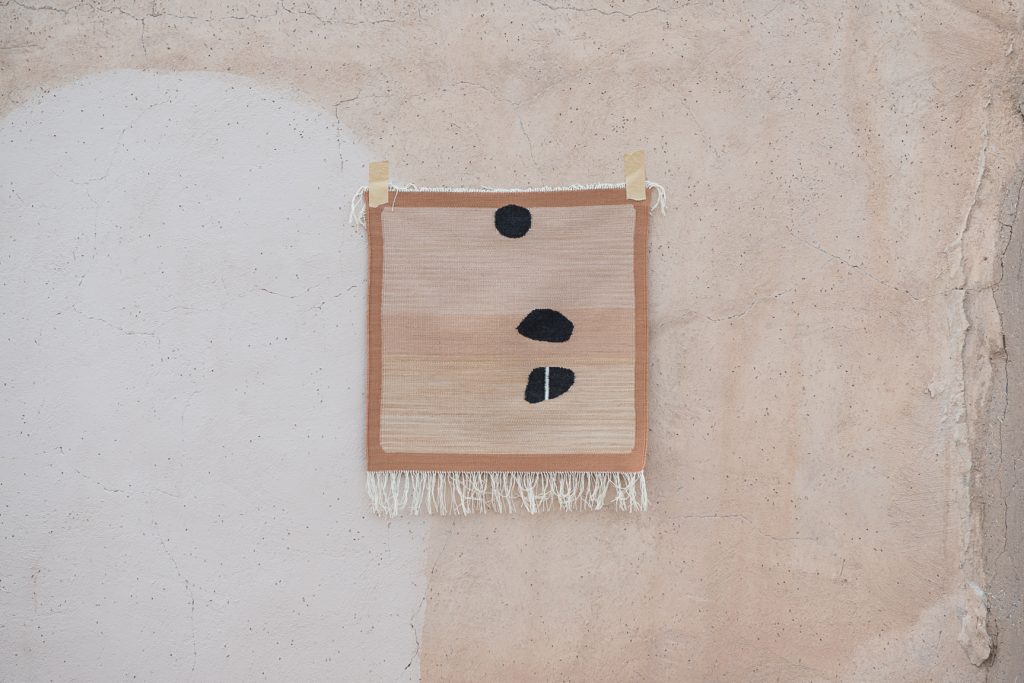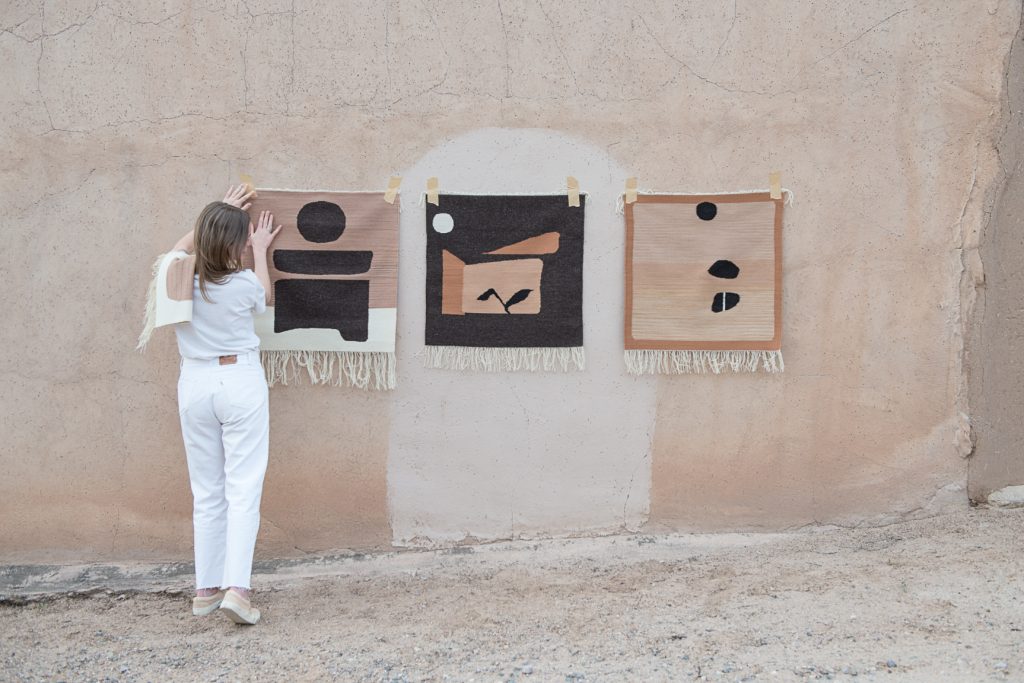In Summer 2017, Emelie Richardson packed only the belongings that would fit in her Volvo and left her home of four years in Seattle for the desert. In the midst of a life-altering breakup, she was seeking a fresh start. She found it in Chimayo, New Mexico.
Richardson — a weaver with a BFA in painting and fiber from the University of Kentucky — encountered Ortega’s Weaving Shop not long after her cross-country move. There, she met seventh-generation weaver Chris Ortega. The two chatted about their mutual dedication to textiles, and Richardson soon began an apprenticeship with Ortega.
Time has been kind to Chimayo, where weaving traditions have persisted for hundreds of years, largely untouched by change. In the late 1500s, Spanish colonists introduced the horizontal European treadle loom to the area. The two-harness loom is now referred to as the Rio Grande Walking Loom and remains the loom of choice for most Chimayo weavers, including the Ortegas and now Richardson.
Families like the Ortegas have been masters of their craft since the 1700s. They hand their knowledge and skills down from one generation to the next, passing the tradition of weaving along like a treasured folk tale or origin story.

Through her apprenticeship with Ortega, Richardson was threaded into this treasured tradition. She became part of Chimayo’s story. For nearly two years, she worked in the Ortegas’ production studio and formed a tight bond with the family.
“I’m inspired by devotion to long-standing family tradition and feel such a strong connection to the Ortega family,” she says. “Being so readily accepted into their family and community was surprising to me at first. I feel invested in telling their stories to keep their traditions alive.”
Both within and beyond Ortega’s Weaving Shop, Richardson has found her home and creative space in Chimayo. She draws inspiration for her art from the landscape in and around Chimayo, from both the town’s old plaza and nature.
“I feel a sense of freedom in Chimayo I’ve not felt in any other place I’ve called home,” she says. “Here there are fewer constraints and more space and time to be playful, both in and out of the studio.”
Today, Richardson’s art honors the desert — her muse and constant companion. She hikes daily on trails around her home, wandering along the sandy beds of cream and beige-hued arroyos that snake through the hills.
“Walking in the evening helps to refresh and restart my thoughts after the workday — and nothing quite compares to New Mexico’s golden hour glow,” she says.
Nature is essential for Richardson’s creativity. It soaks into her being, and she communicates her love for it on her loom — a 60-year-old Rio Grande Walking Loom, a gift from the Ortega family.
“Nothing can restore my sense of self, my feeling of being present, like time alone in the outdoors,” she says. “It’s difficult to do it justice, the way it makes me feel, with words, which is why I hope it translates through my work.”
On her walks, Richardson takes in the details of the high desert: tiny, spiny cacti; the textures of the sunbaked arroyo walls; and the snow-capped mountains in the distance. She recreates the natural features when they’re fresh in her memory, sometimes painting her ideas before stepping onto her loom.
Woven with wool from farms in northern New Mexico, the pieces in Richardson’s newest series, Lonesome Love, truly embody the desert’s essence. One features a dark background with a bright, white moon. Another captures the gradient colors of sand, blending from apricot to milky blush. The shapes in Richardson’s pieces feel natural, like stones in a riverbed or the stacked dunes that rise from the desert.
XX Maria Manuela. Photos by Brandon Soder.
Learn more about traditional Rio Grande weaving on your next trip to New Mexico and visit Ortega’s Weaving Shop at 57 Plaza del Cerro, Chimayo, NM 87522. This story originally appeared in RANGE Magazine Issue 11: Origins. Buy your copy HERE.
